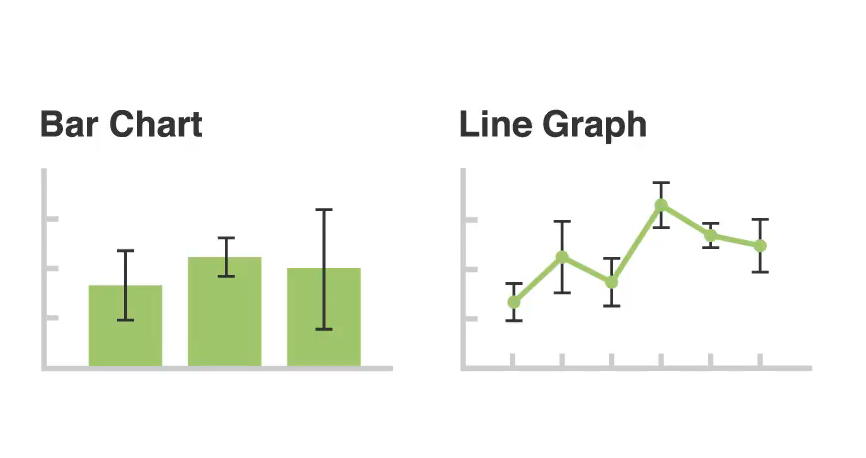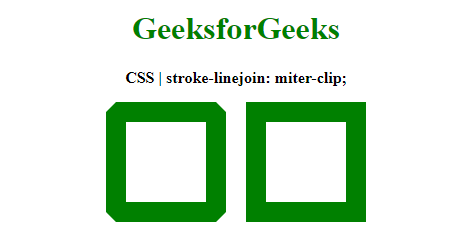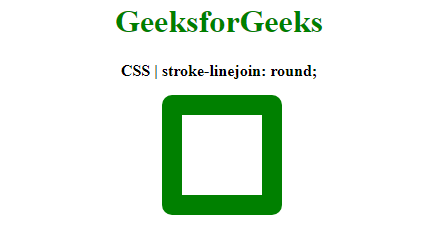CSS | свойство stroke-linejoin
Опубликовано: 2 Марта, 2022
Свойство обводки-линии - это встроенное свойство, используемое для определения формы, которая используется для завершения открытого вложенного пути обводки.
Синтаксис:
штрих-прямое соединение: митра | зажим для митры | круглый | скос | дуги | начальная | наследовать
Property Values:
- miter: It is used to indicate that a sharp corner would be used to join the two ends. The outer edges of the stroke are extended to the tangents of the path segments until they intersect. This gives the ending a sharp corner.
Example:
<!DOCTYPE html><html><head><title>CSS | stroke-linejoin property</title><style>.stroke1 {stroke-linejoin: miter;stroke-width: 20px;stroke: green;fill: none;}</style></head><body><center><h1style="color: green">GeeksforGeeks</h1><b>CSS | stroke-linejoin: miter;</b><divclass="container"><svgwidth="400px"height="200px"version="1.1"><rectx="153"y="25"width="100"height="100"class="stroke1"/></svg></div></center></body></html>Output:

- miter-clip: It is used to indicate that a sharp corner would be used to join the two ends. The outer edges of the stroke are extended to the tangents of the path segments until they intersect.
It gives the ending a sharp corner like the miter value except another property. The stroke-miterlimit is used to determine whether the miter would be clipped if it exceeds a certain value. It is used to provide a better-looking miter on very sharp joins or animations.
Example:
<!DOCTYPE html><html><head><title>CSS | stroke-linejoin property</title><style>.stroke1 {stroke-linejoin: miter-clip;/* setting a lower miterlimit */stroke-miterlimit: 1;stroke-width: 20px;stroke: green;fill: none;}.stroke2 {stroke-linejoin: miter-clip;/* setting a higher miterlimit */stroke-miterlimit: 2;stroke-width: 20px;stroke: green;fill: none;}</style></head><body><center><h1style="color: green">GeeksforGeeks</h1><b>CSS | stroke-linejoin: miter-clip;</b><divclass="container"><svgwidth="400px"height="200px"version="1.1"><rectx="80"y="25"width="100"height="100"class="stroke1"/><rectx="220"y="25"width="100"height="100"class="stroke2"/></svg></div></center></body></html>Output:

- round: It is used to indicate that rounded the corner would be used to join the two ends.
Example:
<!DOCTYPE html><html><head><title>CSS | stroke-linejoin property</title><style>.stroke1 {stroke-linejoin: round;stroke-width: 20px;stroke: green;fill: none;}</style></head><body><center><h1style="color: green">GeeksforGeeks</h1><b>CSS | stroke-linejoin: round;</b><divclass="container"><svgwidth="400px"height="200px"version="1.1"><rectx="153"y="25"width="100"height="100"class="stroke1"/></svg></div></center></body></html>Output:

- bevel: It is used to indicate that the connecting point is cropped perpendicular to the joint.
Example:
<!DOCTYPE html><html><head><title>CSS | stroke-linejoin property</title><style>.stroke1 {stroke-linejoin: bevel;stroke-width: 20px;stroke: green;fill: none;}</style></head><body><center><h1style="color: green">GeeksforGeeks</h1><b>CSS | stroke-linejoin: bevel;</b><divclass="container"><svgwidth="400px"height="200px"version="1.1"><rectx="152"y="25"width="100"height="100"class="stroke1"/></svg></div></center></body></html>Output:

- arcs: It is used to indicate that an arcs corner is to be used to join path segments. This shape is formed by the extension of the outer edges of the stroke having the same curvature as the outer edges at the point they join.
- initial: It is used to set the property to its default value.
Example:
<!DOCTYPE html><html><head><title>CSS | stroke-linejoin</title><style>.stroke1 {stroke-linejoin: initial;stroke-width: 20px;stroke: green;fill: none;}</style></head><body><center><h1style="color: green">GeeksforGeeks</h1><b>CSS | stroke-linejoin: initial;</b><divclass="container"><svgwidth="400px"height="200px"version="1.1"><rectx="153"y="25"width="100"height="100"class="stroke1"/></svg></div></center></body></html>Output:

- inherit: It is used to set the property to inherit from its parent.
Supported Browsers: The browser supported by stroke-linejoin property are listed below:
- Chrome
- Internet Explorer 9
- Firefox
- Safari
- Opera
Note: The stroke-linejoin: arcs; is not supported by any major browsers.